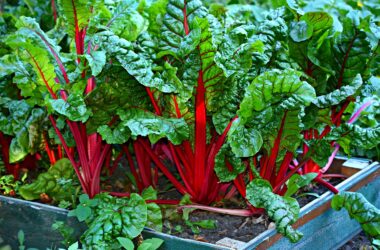In today’s world, where environmental concerns are at the forefront of global discussions, the need for sustainable alternatives has never been greater. One such solution that has gained significant attention is biodegradable and compostable materials. In this article, we will delve into the world of biodegradability and compostability, exploring what they are, how they work, and their impact on our environment.
Table of Contents
- Introduction
- What Does Biodegradable Mean?
- The Science Behind Biodegradation
- Compostable vs. Biodegradable: Understanding the Difference
- Benefits of Biodegradable and Compostable Materials
- Applications of Biodegradable and Compostable Products
- Challenges and Considerations
- Regulations and Standards
- The Future of Biodegradable and Compostable Materials
- How Can Individuals Contribute?
- Case Studies: Success Stories
- Conclusion
- FAQs
1. Introduction
The growing concern for our planet’s well-being has spurred innovation in the materials industry. Traditional plastics and non-biodegradable products have wreaked havoc on the environment for decades. Enter biodegradable and compostable materials, a promising solution to the pollution problem.
2. What Does Biodegradable Mean?
Biodegradability refers to the ability of a material to break down naturally into harmless substances when exposed to environmental conditions, such as sunlight, air, and moisture. Unlike conventional plastics that persist for centuries, biodegradable materials return to nature within a reasonable timeframe.
3. The Science Behind Biodegradation
Biodegradation is a complex process orchestrated by microorganisms like bacteria, fungi, and enzymes. These tiny agents feast on the biodegradable material, breaking it down into simpler compounds like water, carbon dioxide, and biomass.
4. Compostable vs. Biodegradable: Understanding the Difference
While both terms sound similar, there is a critical distinction. Compostable materials not only break down but also turn into nutrient-rich compost, benefiting soil and plants. In contrast, some biodegradable materials may leave behind harmful residues.
5. Benefits of Biodegradable and Compostable Materials
Switching to biodegradable and compostable products offers numerous advantages. They reduce landfill waste, lower carbon footprints, and lessen dependence on fossil fuels. Moreover, these materials help combat marine pollution, a grave concern in today’s world.
6. Applications of Biodegradable and Compostable Products
From packaging materials and disposable cutlery to textiles and agricultural mulch films, biodegradable and compostable materials find applications across various industries. Their versatility makes them an attractive choice for businesses aiming to go green.
7. Challenges and Considerations
Despite their potential, biodegradable and compostable materials face challenges such as cost-effectiveness, limited awareness, and proper disposal. Addressing these issues is crucial for their widespread adoption.
8. Regulations and Standards
To ensure the credibility of biodegradable and compostable claims, regulatory bodies have established standards and certifications. Understanding these guidelines is essential for both manufacturers and consumers.
9. The Future of Biodegradable and Compostable Materials
The future holds promise for biodegradable and compostable materials. With ongoing research and innovation, we can expect more sustainable options that redefine our approach to packaging and daily products.
10. How Can Individuals Contribute?
Individuals can make a significant impact by choosing biodegradable and compostable products, supporting eco-conscious brands, and practicing responsible waste disposal.
11. Case Studies: Success Stories
Explore real-world examples of businesses and communities that have successfully implemented biodegradable and compostable solutions, showcasing the positive outcomes of these choices.
12. Conclusion
In a world grappling with environmental challenges, biodegradable and compostable materials emerge as a ray of hope. Their eco-friendly nature, coupled with their ability to reduce pollution, offers a path towards a greener and more sustainable future.
Similar Articles
- Arctic Amplification: Unraveling the Mysteries of Polar Climate
- Aquaponics: A Sustainable Farming Revolution
FAQs
1. Are biodegradable materials as durable as traditional plastics?
Biodegradable materials can be just as durable for specific applications, but their lifespan is intentionally limited to facilitate natural decomposition.
2. How can I identify genuine compostable products?
Look for reputable certifications like “compostable” logos and compliance with recognized standards, such as ASTM D6400 and EN 13432.
3. Do biodegradable materials release harmful chemicals during decomposition?
The majority of biodegradable materials break down into harmless substances, but it’s essential to choose products with proper certifications to ensure safety.
4. What role do businesses play in promoting biodegradable solutions?
Businesses can drive change by adopting biodegradable and compostable materials in their operations and educating consumers about their benefits.
5. Is composting at home a practical solution for waste reduction?
Home composting can significantly reduce household waste, provided you follow composting guidelines and use appropriate compostable products.
In conclusion, embracing biodegradable and compostable materials is not just a choice; it’s a responsibility. These innovative solutions hold the key to a cleaner, healthier planet for future generations.










